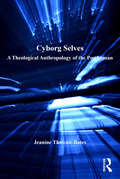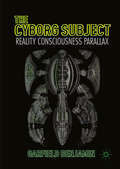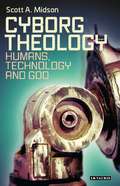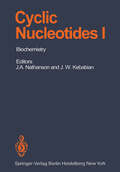- Table View
- List View
Cybersecurity of Digital Service Chains: Challenges, Methodologies, and Tools (Lecture Notes in Computer Science #13300)
by Joanna Kołodziej Matteo Repetto Armend DuzhaThis open access book presents the main scientific results from the H2020 GUARD project. The GUARD project aims at filling the current technological gap between software management paradigms and cybersecurity models, the latter still lacking orchestration and agility to effectively address the dynamicity of the former. This book provides a comprehensive review of the main concepts, architectures, algorithms, and non-technical aspects developed during three years of investigation; the description of the Smart Mobility use case developed at the end of the project gives a practical example of how the GUARD platform and related technologies can be deployed in practical scenarios. We expect the book to be interesting for the broad group of researchers, engineers, and professionals daily experiencing the inadequacy of outdated cybersecurity models for modern computing environments and cyber-physical systems.
Cyberspace Law: Censorship and Regulation of the Internet
by Hannibal TravisThis book explores what the American Civil Liberties Union calls the "third era" in cyberspace, in which filters "fundamentally alter the architectural structure of the Internet, with significant implications for free speech." Although courts and nongovernmental organizations increasingly insist upon constitutional and other legal guarantees of a freewheeling Internet, multi-national corporations compete to produce tools and strategies for making it more predictable. When Google attempted to improve our access to information containing in books and the World Wide Web, copyright litigation began to tie up the process of making content searchable, and resulted in the wrongful removal of access to thousands if not millions of works. Just as the courts were insisting that using trademarks online to criticize their owners is First Amendment-protected, corporations and trade associations accelerated their development of ways to make Internet companies liable for their users’ infringing words and actions, potentially circumventing free speech rights. And as social networking and content-sharing sites have proliferated, so have the terms of service and content-detecting tools for detecting, flagging, and deleting content that makes one or another corporation or trade association fear for its image or profits. The book provides a legal history of Internet regulation since the mid-1990s, with a particular focus on efforts by patent, trademark, and copyright owners to compel Internet firms to monitor their online offerings and remove or pay for any violations of the rights of others. This book will be of interest to students of law, communications, political science, government and policy, business, and economics, as well as anyone interested in free speech and commerce on the internet.
Cyberspace Law: Censorship and Regulation of the Internet
by Hannibal TravisThis book explores what the American Civil Liberties Union calls the "third era" in cyberspace, in which filters "fundamentally alter the architectural structure of the Internet, with significant implications for free speech." Although courts and nongovernmental organizations increasingly insist upon constitutional and other legal guarantees of a freewheeling Internet, multi-national corporations compete to produce tools and strategies for making it more predictable. When Google attempted to improve our access to information containing in books and the World Wide Web, copyright litigation began to tie up the process of making content searchable, and resulted in the wrongful removal of access to thousands if not millions of works. Just as the courts were insisting that using trademarks online to criticize their owners is First Amendment-protected, corporations and trade associations accelerated their development of ways to make Internet companies liable for their users’ infringing words and actions, potentially circumventing free speech rights. And as social networking and content-sharing sites have proliferated, so have the terms of service and content-detecting tools for detecting, flagging, and deleting content that makes one or another corporation or trade association fear for its image or profits. The book provides a legal history of Internet regulation since the mid-1990s, with a particular focus on efforts by patent, trademark, and copyright owners to compel Internet firms to monitor their online offerings and remove or pay for any violations of the rights of others. This book will be of interest to students of law, communications, political science, government and policy, business, and economics, as well as anyone interested in free speech and commerce on the internet.
Cyberspace Safety and Security: 10th International Symposium, CSS 2018, Amalfi, Italy, October 29–31, 2018, Proceedings (Lecture Notes in Computer Science #11161)
by Arcangelo Castiglione Florin Pop Massimo Ficco Francesco PalmieriThis book constitutes the proceedings of the 10th International Symposium on Cyberspace Safety and Security, CSS 2018, held in Amalfi, Italy, in October 2018. The 25 full papers presented in this volume were carefully reviewed and selected from 79 submissions.The papers focus on cybersecurity; cryptography, data security, and biometric techniques; and social security, ontologies, and smart applications.
Cyberthreats and the Decline of the Nation-State (Routledge Research in Information Technology and E-Commerce Law)
by Susan W. BrennerThis book explores the extraordinary difficulties a nation-state’s law enforcement and military face in attempting to prevent cyber-attacks. In the wake of recent assaults including the denial of service attack on Estonia in 2007 and the widespread use of the Zeus Trojan Horse software, Susan W. Brenner explores how traditional categories and procedures inherent in law enforcement and military agencies can obstruct efforts to respond to cyberthreats. Brenner argues that the use of a territorially-based system of sovereignty to combat cyberthreats is ineffective, as cyberspace erodes the import of territory. This problem is compounded by the nature of cybercrime as a continually evolving phenomenon driven by rapid and complex technological change. Following an evaluation of the efficacy of the nation-state, the book goes on to explore how individuals and corporations could be integrated into a more decentralized, distributed system of cyberthreat control. Looking at initiatives in Estonia and Sweden which have attempted to incorporate civilians into their cyber-response efforts, Brenner suggests that civilian involvement may mediate the rigid hierarchies that exist among formal agencies and increase the flexibility of any response. This book will be of great interest to students and researchers of information technological law and security studies.
Cyberthreats and the Decline of the Nation-State (Routledge Research in Information Technology and E-Commerce Law)
by Susan W. BrennerThis book explores the extraordinary difficulties a nation-state’s law enforcement and military face in attempting to prevent cyber-attacks. In the wake of recent assaults including the denial of service attack on Estonia in 2007 and the widespread use of the Zeus Trojan Horse software, Susan W. Brenner explores how traditional categories and procedures inherent in law enforcement and military agencies can obstruct efforts to respond to cyberthreats. Brenner argues that the use of a territorially-based system of sovereignty to combat cyberthreats is ineffective, as cyberspace erodes the import of territory. This problem is compounded by the nature of cybercrime as a continually evolving phenomenon driven by rapid and complex technological change. Following an evaluation of the efficacy of the nation-state, the book goes on to explore how individuals and corporations could be integrated into a more decentralized, distributed system of cyberthreat control. Looking at initiatives in Estonia and Sweden which have attempted to incorporate civilians into their cyber-response efforts, Brenner suggests that civilian involvement may mediate the rigid hierarchies that exist among formal agencies and increase the flexibility of any response. This book will be of great interest to students and researchers of information technological law and security studies.
Cyborg Selves: A Theological Anthropology of the Posthuman (Routledge Science and Religion Series)
by Jeanine Thweatt-BatesWhat is the 'posthuman'? Is becoming posthuman inevitable-something which will happen to us, or something we will do to ourselves? Why do some long for it, while others fearfully reject it? These questions underscore the fact that the posthuman is a name for the unknown future, and therefore, not a single idea but a jumble of competing visions - some of which may be exciting, some of which may be frightening, and which is which depends on who you are, and what you desire to be. This book aims to clarify current theological and philosophical dialogue on the posthuman by arguing that theologians must pay attention to which form of the posthuman they are engaging, and to demonstrate that a 'posthuman theology' is not only possible, but desirable, when the vision of the posthuman is one which coincides with a theological vision of the human.
Cyborg Selves: A Theological Anthropology of the Posthuman (Routledge Science and Religion Series)
by Jeanine Thweatt-BatesWhat is the 'posthuman'? Is becoming posthuman inevitable-something which will happen to us, or something we will do to ourselves? Why do some long for it, while others fearfully reject it? These questions underscore the fact that the posthuman is a name for the unknown future, and therefore, not a single idea but a jumble of competing visions - some of which may be exciting, some of which may be frightening, and which is which depends on who you are, and what you desire to be. This book aims to clarify current theological and philosophical dialogue on the posthuman by arguing that theologians must pay attention to which form of the posthuman they are engaging, and to demonstrate that a 'posthuman theology' is not only possible, but desirable, when the vision of the posthuman is one which coincides with a theological vision of the human.
The Cyborg Subject: Reality, Consciousness, Parallax
by Garfield BenjaminThis book outlines a new conception of the cyborg in terms of consciousness as the parallax gap between physical and digital worlds. The contemporary subject constructs its own internal reality in the interplay of the Virtual and the Real. Reinterpreting the work of Slavoj Žižek and Gilles Deleuze in terms of the psychological and ontological construction of the digital, alongside the philosophy of quantum physics, this book offers a challenge to materialist perspectives in the fluid cyberspace that is ever permeating our lives. The inclusion of the subject in its own epistemological framework establishes a model for an engaged spectatorship of reality. Through the analysis of online media, digital art, avatars, computer games and science fiction, a new model of cyborg culture reveals the opportunities for critical and creative interventions in the contemporary subjective experience, promoting an awareness of the parallax position we all occupy between physical and digital worlds.
Cyborg Theology: Humans, Technology and God
by Scott A. MidsonIn particular, Donna Haraway argued in her famous 1991 'Cyborg Manifesto' that people, since they are so often now detached and separated from nature, have themselves evolved into cyborgs. This striking idea has had considerable influence within critical theory, cultural studies and even science fiction (where it has surfaced, for example, in the Terminator films and in the Borg of the Star Trek franchise). But it is a notion that has had much less currency in theology. In his innovative new book, Scott Midson boldly argues that the deeper nuances of Haraway's and the cyborg idea can similarly rejuvenate theology, mythology and anthropology. Challenging the damaging anthropocentrism directed towards nature and the non-human in our society, the author reveals - through an imaginative reading of the myth of Eden - how it is now possible for humanity to be at one with the natural world even as it vigorously pursues novel, 'post-human', technologies.
Cyborgs, Ethics, and The Matrix: Simulations of Sex and Gender (Palgrave Studies in (Re)Presenting Gender)
by Rebecca GibsonThe Matrix (Lana Wachowski and Lilly Wachowski 1999) has permeated our cultural consciousness for two decades, working its way into such common parlance as “a glitch in the Matrix,” and the idea of taking the Red Pill. With the release of the fourth movie, The Matrix Resurrections (Lana Wachowski 2021), and the confirmation of the franchise being a metaphor for gender transition, this book examines how the entire franchise contributes to the discourse on sex and gender, and how it has been instrumental in propelling the creation of new types of cyborg technology. This book centers on the main philosophical theme of The Matrix, know thyself, and relate it to the quest for authenticity which creates our identities—be they human, or human “enough”—as we move through the world.
Cycle Spaces of Flag Domains: A Complex Geometric Viewpoint (Progress in Mathematics #245)
by Gregor Fels Alan Huckleberry Joseph A. WolfDriven by numerous examples from the complex geometric viewpoint New results presented for the first time Widely accessible, with all necessary background material provided for the nonspecialist Comparisons with classical Barlet cycle spaces are given Good bibliography and index
Cyclen-basierte Metallonucleasen: Synthese und biochemische Evaluation (BestMasters)
by Jan HormannJan Hormann zeigt am Beispiel von Cyclen-basierten Kupferkomplexen die Neuentwicklung und Optimierung von künstlichen Nucleasen, wobei besonderer Fokus auf die synthetische Arbeit und biochemischer Evaluation der Nucleasen gelegt wird. Dies ist ein wichtiger Forschungsbeitrag, weil die Entwicklung neuer Krebsmedikamente aufgrund immer häufiger auftretender Resistenzen gegenüber altgedienten Medikamenten an Bedeutung gewinnt. Im Fokus heutiger Forschung stehen dabei unter anderem künstliche Metallonucleasen, die DNA in kleine Fragmente zerschneiden können und so lebenswichtige Zellabläufe stören und schlussendlich zum Zelltod führen.
Cycles of Invention and Discovery: Rethinking The Endless Frontier
by Venkatesh NarayanamurtiUsing Nobel Prize–winning examples like the transistor, laser, and magnetic resonance imaging, Venky Narayanamurti and Tolu Odumosu explore the daily micro-practices of research and show that distinctions between the search for knowledge and creative problem solving break down when one pays attention to how pathbreaking research actually happens.
Cycles of Invention and Discovery: Rethinking The Endless Frontier
by Venkatesh NarayanamurtiUsing Nobel Prize–winning examples like the transistor, laser, and magnetic resonance imaging, Venky Narayanamurti and Tolu Odumosu explore the daily micro-practices of research and show that distinctions between the search for knowledge and creative problem solving break down when one pays attention to how pathbreaking research actually happens.
Cycles of Time: An Extraordinary New View of the Universe
by Sir Roger PenroseWhat came before the Big Bang? How did the universe begin and must it inevitably end? In this remarkable book Roger Penrose brilliantly illuminates some of the deepest mysteries of the universe. Cycles of Time contains a penetrating analysis of the second law of thermodynamics - according to which the 'randomness' of our world is continually increasing - and a thorough examination of the light-cone geometry of space-time. It combines these two central themes to show how the expected ultimate fate of our accelerating, expanding universe can actually be reinterpreted as the 'big bang' of a new one. Presenting various standard and non-standard cosmological models, discussing black holes in depth as well as taking in the role of the cosmic microwave background along the way, Roger Penrose argues that the Big Bang was not actually the beginning of everything - nor will it signal the end.Original and compelling, Cycles of Time offers new answers to the ultimate questions of life.
Cyclic β-Glucans from Microorganisms: Production, Properties and Applications (SpringerBriefs in Microbiology)
by Geetha Venkatachalam Sathyanarayana Gummadi Mukesh Dobleto Cyclic glucans are polysaccharides that are predominantly produced by Agrobacterium, Bradyrhizobium and Rhizobium sp. and widely used in the pharmaceutical and food industries. In this book, the applications, properties, analytical tools, production and genes of four main cyclic β-glucans from microorganisms are highlighted and critically evaluated. As biocompatible and biodegradable renewable resources, they have an immense potential for future applications, which has not yet been fully exploited. This concise review will help to bridge this gap.
Cyclic ADP-Ribose and NAADP: Structures, Metabolism and Functions
by Hon Cheung LeeIn the past decade we have witnessed the birth and maturing of a field of research centering on the Ca2+ signaling functions of cyclic ADP-ribose (cADPR) and nicotinic acid adenine dinucleotide phosphate (NAADP), which structures and mechanisms of action are truly unique among all Ca2+ messengers. A wide range of physiological functions are now known to be mediated by them in cells spanning three biological kingdoms from protist, plant to animal. This is the first book devoted entirely to the field. The story behind the emergence of the field is told and followed by comprehensive reviews of the enzymology, regulations and gene structures of ADP-ribosyl cyclases responsible for metabolizing cADPR and NAADP. Also covered is some of the current methodology developed for and widely used in the field. The rest of the book focuses on and details the Ca2+ signaling mechanisms and specific physiological functions of these two messengers in various cellular systems.
Cyclic-Nucleotide Phosphodiesterases in the Central Nervous System: From Biology to Drug Discovery (Wiley Series in Drug Discovery and Development)
by Nicholas J. BrandonThis book reviews advances in understanding phosphodiesterases within the central nervous system and their therapeutic applications. A range of expert authors from both academia and industry describe these, then focus on the areas of greatest scientific and medical interest to provide more detailed coverage. Therapeutic and drug discovery applications are covered for diseases including Alzheimer's, Parkinson's, schizophrenia, erectile dysfunction, and spinal cord injuries. There is also a chapter on drug discovery tools such as in vitro assays and X-ray structures for medicinal chemistry studies.
Cyclic-Nucleotide Phosphodiesterases in the Central Nervous System: From Biology to Drug Discovery (Wiley Series in Drug Discovery and Development #19)
by Nicholas J. Brandon Anthony R. WestThis book reviews advances in understanding phosphodiesterases within the central nervous system and their therapeutic applications. A range of expert authors from both academia and industry describe these, then focus on the areas of greatest scientific and medical interest to provide more detailed coverage. Therapeutic and drug discovery applications are covered for diseases including Alzheimer's, Parkinson's, schizophrenia, erectile dysfunction, and spinal cord injuries. There is also a chapter on drug discovery tools such as in vitro assays and X-ray structures for medicinal chemistry studies.
Cyclic Nucleotide Signaling
by Xiaodong ChengShowcasing the recent progresses of the field, Cyclic Nucleotide Signaling covers the major tools and methodologies used in various areas of research. The majority of the chapters are protocol oriented, with the goal of providing clear directions for laboratory use. Students and investigators new to the field will find this book particularly inform
Cyclic Nucleotide Signaling in Plants: Methods and Protocols (Methods in Molecular Biology #1016)
by Chris GehringOver the last two decades there has been a growing interest in cyclic nucleotide research in plants with an emphasis on the elucidation of the roles of cGMP and cAMP. In Cyclic Nucleotide Signaling in Plants: Methods and Protocols, expert researchers in the field detail many approaches to better understand the biological role of this important signaling system. Written in the highly successful Methods in Molecular Biology™ series format, chapters include introductions to their respective topics, lists of the necessary materials and reagents, step-by-step, readily reproducible laboratory protocols, and key tips on troubleshooting and avoiding known pitfalls. Authoritative and practical, Cyclic Nucleotide Signaling in Plants: Methods and Protocols seeks to aid scientist in further understanding signal transduction and the molecular mechanisms underlying cellular signaling.
Cyclic Nucleotides: Part I: Biochemistry (Handbook of Experimental Pharmacology #58 / 1)
by M. M. Appleman M. A. Ariano J. A. Beavo L. Birnbaumer G. Brooker W. Y. Cheung P. Greengard T. K. Harden J. F. Harper R. Iyengar E. M. Johnson C. L. Kapoor J. F. Kuo C. K. Mittal M. C. Mumby F. Murad J. P. Perkins T. W. Rall G. R. Revankar R. K. Robins H. Schulman M. Shoji A. Steiner D. R. Storm D. J. Takemoto U. Walter R. H. WhitsonThe purpose of the present volume, the first of two on the pharmacology, biochemistry, and physiology of cyclic nucleotides, is to provide a comprehensive and up-to-date anthology on the nature and role of these important chemical regulators. Each of the chapters is the work of internationally known researchers who present a lucid and detailed review of their subject and not merely a single laboratory's viewpoint. The chapters emphasize critical assessments of the field rather than mere listings of experimental findings. By so doing, the contributors present the role of cyclic nucleotides in relationship to other intracellular regulators. Each chapter begins with a detailed summary to allow the reader to obtain a rapid overview of subsequent material. In addition, there are extensive bibliographies and a detailed subject index. Wherever pertinent, the chapters contain sections on drug mechanisms, physiological relevance, and disease processes. The Volume is divided into two sections, each beginning with an overview written by Professors T. W. RALL and P. GREENGARD, respectively. The first section focuses on the detailed pharmacology and chemistry of cyclic nucleotides, including their formation, degradation, measurement, and interaction with various modulatory agents, such as receptors and calcium. The second section is concerned with the biochemistry of protein phosphorylation, a process which appears to be one of the most important mechanisms for the intracellular expression of cyclic nucleotide action in eukaryotic cells.
Cyclic Peptide Design (Methods in Molecular Biology #2001)
by Gilles GoetzThis book covers strategies to improve cell permeability, intestinal permeability, and metabolic stability, which are the typical liabilities associated with cyclic peptides, to enhance protein-protein recognition, and to build upon nature’s cyclic peptides and macrocycles. Chapters also cover key peptide screening and display strategies, as well as important synthetic approaches towards cyclic and helical peptides. Cyclic peptides have become of significant importance as chemical tools in biology and drug discovery, since this class of chemicals has become a credible alternative source of new drug leads on par with traditional small molecules. As a part of the Methods in Molecular Biology series, this collection includes the kind of detail and implementation advice to aid researchers in the field. Authoritative and cutting-edge, Cyclic Peptide Design serves as a critical resource and go-to reference for researchers within the pharmaceutical industry, as well as scientists and students in the bioorganic, medicinal, and natural product chemistry fields.
The Cyclic Peptide Toxins of Amanita and Other Poisonous Mushrooms
by Jonathan WaltonPoisonous mushrooms have fascinated scientists and laypersons alike for thousands of years. Almost all mushroom fatalities are due to the genus Amanita, whose poetic common names (death cap, destroying angel) attest to their lethality. In his classic 1986 book, Theodor Wieland covered the state of our knowledge about the chemistry and biochemistry of the toxins of Amanita mushrooms up until that time, with a particular focus on the decades of chemical research by him and the Wieland dynasty (including his father, brother, brother-in-law, and cousin). Wieland’s book is now mainly of historical interest, with its exhaustive overview of the early chemical studies done without benefit of methods taken for granted by modern chemists. This book is a complete top-to-bottom revision of Wieland’s 1986 book. The material covers history, chemistry, and biology with equal thoroughness. It should be of interest to natural products chemists and biologists, professional and amateur mycologists, and toxicologists. The three scientific fields that are most relevant to the book are natural products chemistry, mycology, and fungal molecular genetics. Dr. Walton is an expert in all three. To maximize the broad utility and appeal of the book, care has been taken to define all technical terms specific to a particular discipline, so that, for example, mycologists will be able to understand the relevant chemistry, and chemists will be able to understand the relevant fungal biology.




















